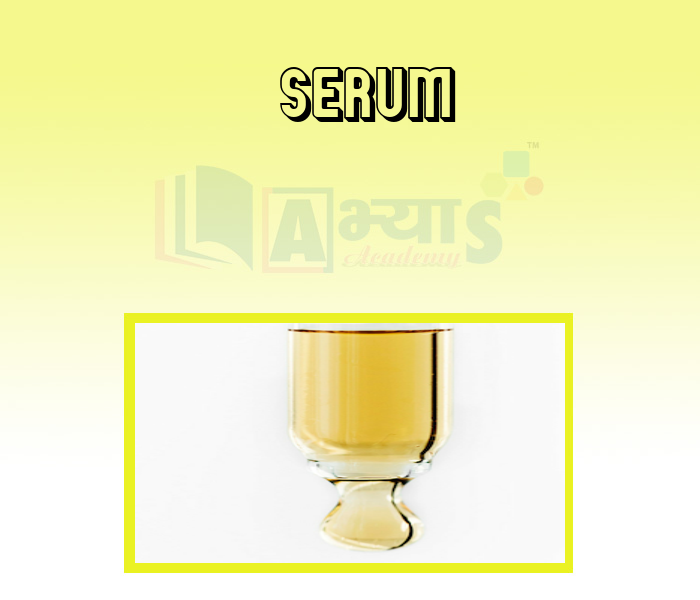Serum


Serum
Serum is the fluid and solute component of blood which does not play a role in clotting. It may be defined as blood plasma without fibrinogens. Serum does not contain white blood cells, red blood cells, platelets or clotting factors.
Serum and plasma are obtained from the liquid portion of the blood that is obtained when the cells are removed.Serum is the liquid that remains after the clotting of blood. Whereas, plasma is the liquid that remains when anticoagulant is added to prevent clotting.
Function :
The human serum is a circulating carrier of exogenous and endogenous liquids in the blood. It allows substances to stick to the molecules within the serum and be buried within it. Human serum thus helps in the transportation of fatty acids and thyroid hormones which act on most of the cells found in the body.
Human serum is used to distribute antibiotics in the body and albumin allows the curable substances in the antibiotics to be bind and carried out throughout the body.
The human off - the - clot serum is the serum that has been allowed to coagulate naturally after collection and has not been exposed to any anticoagulants. This type of serum is ideal for metabolic studies.
Human AB serum is collected from type AB donors and it lacks antibodies against blood type A and B antigens. Human AB serum is used in cell therapy applications and transplantation and tissue engineering.

Students / Parents Reviews [10]
Abhyas Methodology is very good. It is based on according to student and each child manages accordingly to its properly. Methodology has improved the abilities of students to shine them in future.

Manish Kumar
10thMy experience with Abhyas academy is very good. I did not think that my every subject coming here will be so strong. The main thing is that the online tests had made me learn here more things.

Hiya Gupta
8thIt was good as the experience because as we had come here we had been improved in a such envirnment created here.Extra is taught which is beneficial for future.

Eshan Arora
8thMy experience with Abhyas is very good. I have learnt many things here like vedic maths and reasoning also. Teachers here first take our doubts and then there are assignments to verify our weak points.

Shivam Rana
7thA marvelous experience with Abhyas. I am glad to share that my ward has achieved more than enough at the Ambala ABHYAS centre. Years have passed on and more and more he has gained. May the centre flourish and develop day by day by the grace of God.

Archit Segal
7thIt was a good experience with Abhyas Academy. I even faced problems in starting but slowly and steadily overcomed. Especially reasoning classes helped me a lot.

Cheshta
10thI have spent a wonderful time in Abhyas academy. It has made my reasoning more apt, English more stronger and Maths an interesting subject for me. It has given me a habbit of self studying

Yatharthi Sharma
10thAbhyas is a complete education Institute. Here extreme care is taken by teacher with the help of regular exam. Extra classes also conducted by the institute, if the student is weak.

Om Umang
10thIt has a great methodology. Students here can get analysis to their test quickly.We can learn easily through PPTs and the testing methods are good. We know that where we have to practice

Barkha Arora
10thAbout Abhyas metholodology the teachers are very nice and hardworking toward students.The Centre Head Mrs Anu Sethi is also a brilliant teacher.Abhyas has taught me how to overcome problems and has always taken my doubts and suppoeted me.
